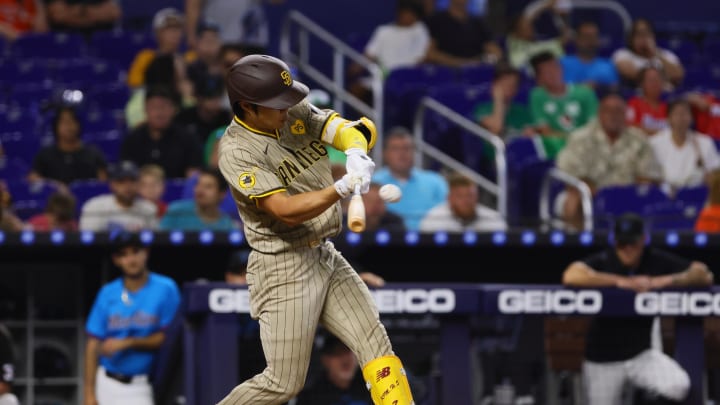Former MLB Umpire Explains Controversial Home Run Reversal in Padres-Marlins

The San Diego Padres appeared to have tied Sunday's game against the Miami Marlins when Padres shortstop Ha-Seong Kim, with two outs and his club trailing by one run, lined a ball to deep left field. The ball bounced off of Marlins left fielder Kyle Stowers and traveled over the fence, prompting the umpiring crew to signal for a home run-and the Padres to begin celebrating what they believed was the game-tying hit.
But the play was reviewed in the replay room and ultimately reversed to a ground-rule double, which wiped the tying run off the board for San Diego, and, after catcher Luis Campusano struck out swinging, resulted in a loss for the Padres.
So, why was Kim's hit, which appeared to be a home run once it bounced of Stowers and traveled over the loanDepot Park fence, not a home run?
Former MLB umpire Mike Winters, who umpired from 1988 to 2019, explained why the umpiring crew was correct to reverse the home run during an appearance on 97.3 The Fan's postgame show with host Sam Levitt.
We had former MLB umpire Mike Winters call into our Padres Postgame Show to help us understand the ruling on Ha-Seong Kim’s homer that was reversed into a ground-rule double.
— Sammy Levitt (@SammyLev) August 11, 2024
A really in-depth explanation of how/why the call was made in the MLB replay room: pic.twitter.com/XPS1aWRwn9
"I understand it's confusing but when the ball hit the wall and came back towards the field, by rule, it is no longer in flight," Winters explained. "So, I describe it this way- a player can't catch it. It's the same as if it bounced on the ground once it starts coming back towards the field."
"So it didn't hit the top of the wall and continue out. if it had done that, then yeah, it would have been a home run. But it came back towards the field and then hit the left fielder and was sent over. So by rule, no longer in flight and then the fielder knocked it out of the park over the fence in dead area- and now made it a ground-rule double."
Essentially, the fact that the ball hit the fence and was headed back toward the field of play before Stowers hit it over the fence made it a ground-rule double.
Padres manager Mike Shildt told reporters after the game that the umpiring crew explained "nothing" to him, adding that the play was "tough timing."
Mike Shildt on what he saw on Ha-Seong Kim's ground-rule double and the explanation (or lack thereof) he was given by the umpires after it was overturned after initially being called a home run: pic.twitter.com/nisUEQCwoI
— 97.3 The Fan (@973TheFanSD) August 11, 2024
"The rule is if it hits the wall, hits the defender, and then goes over the wall, it’s a double," Shildt said. "I think they got it right. Whether I agree with the rule or not, it was tough timing."
